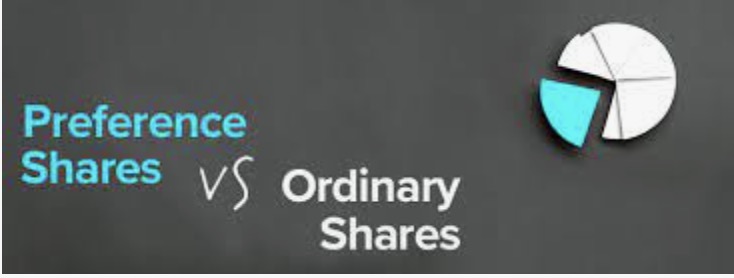How to Invest Smarter with Dollar-Cost Averaging
Are you looking for a tried and tested investment strategy to help you build wealth and minimize risk? Look no further!
In this blog post, we introduce you to the powerful concept of Dollar Cost Averaging (DCA), a technique that can help you invest smarter and steadily grow your wealth.
Whether you're a seasoned pro or a beginner just starting your investing journey, this simple yet effective approach can do wonders for your portfolio.
So join us for an in-depth look at dollar cost averaging and show how to use the strategy to achieve your financial goals.

What is Dollar Cost Averaging (DCA)?
Before we get started, let's clarify what the average cost is. At its core, DCA is an investment strategy that periodically invests a fixed amount of money in a specific asset, such as a stock or a mutual fund, regardless of the asset's price.
This enables investors to reduce the impact of market volatility on their portfolios and avoid the pitfalls of trying to time the market.
Benefits of Dollar Cost Averaging
Now that we have established what a DCA is let's explore the various benefits it can offer investors:
1. Reduce market timing risk:
Trying to time the market can be risky, as even seasoned investors often need help accurately predicting short-term market movements. DCA eliminates the need for time, so you can invest regularly and take advantage of long-term market growth.
2. Reduce emotional investment:
Emotional decisions often lead to poor investment decisions. By sticking to a predetermined investment plan, DCA helps minimize the influence of emotions on your investment strategy.
3. Lower average cost per share:
If you invest a fixed amount regularly, you will buy more shares when prices are low and fewer when prices are high. Over time, this could lower the average cost per share and increase your returns.
4. Promote disciplined investment:
DCA promotes a consistent and disciplined approach to investing, making sticking to your long-term investment goals easier.
How to implement dollar cost averaging?
Are you ready to put DCA into action? Follow these simple steps:
1. Select your investment:
Choose the asset you want to invest in, such as stocks, bonds, or mutual funds. When selecting, consider your risk tolerance, investment objectives, and time horizon.
2. Determine your investment amount:
Determine a fixed amount to invest in each time interval. This amount should be affordable and sustainable in the long run.
3. Make an investment plan:
Make a regular investment plan, e.g., B. monthly or quarterly, and stick to it. Be consistent and avoid skipping intervals to maximize the benefits of DCA.
4. Automate your investments:
Many investing platforms and brokers offer automated investing options that allow you to set up recurring transfers and purchases. This helps ensure you stay on track with the DCA plan.
5. Review and adjustment:
Review your investment strategy regularly and make any necessary adjustments based on your financial goals or changes in your circumstances.

When should dollar cost averaging be used?
DCA can be a valuable strategy for a variety of investors, including:
1. Long-term investors:
Long-term accumulators of wealth can benefit from DCA's consistent and disciplined approach.
2. Risk-averse investors:
By keeping an eye on market volatility, DCA can help you reduce the impact of market volatility and minimize the risks associated with trying to time the market.
3. New investors:
For beginners, DCA provides simple and easy-to-follow strategies to help them develop good investing habits.
4. The busy investor:
If you need more time or expertise to manage your assets actively, DCA offers a more practical approach with minimal ongoing effort.
Potential Disadvantages of Dollar Cost Averaging
While DCA offers many benefits, it is essential to be aware of some potential disadvantages:
1. Limited upside:
If you invest consistently over the long term, you can avoid missing out on potential gains from market timing when you can accurately predict market movements. However, the risks of poor market timing often outweigh the potential benefits for most investors.
2. Inefficient use of funds:
If you have large sums of money to invest, there may be a better strategy than DCA because you hold some of your funds in cash rather than fully backing them.
3. Transaction fees:
Investing small amounts regularly may incur higher transaction fees than a one-time investment, affecting your returns. Minimize these costs by choosing a low-cost investment platform or brokerage firm.
Dollar Cost Averaging vs. One-Time Investments
Another investment strategy is capital investment, which involves investing a large amount of money simultaneously.
While you can get higher returns if you invest during a market downturn, investing before the market downturn is also risky.
Deciding between DCA and lump sum investments depends on your risk tolerance, investment objectives, and financial situation.
Tips for Successful Dollar Cost Averaging
Consider these tips to get the most out of your DCA strategy:
1. Discipline:
The key to a successful DCA is consistency. Stick to your investment plan and resist changing strategies based on short-term market movements.
2. Reduce costs:
Minimize transaction fees and choose low-cost investment options to maximize returns.
3. Reinvested dividends:
When your investment pays off, you should reinvest it to enhance the capabilities of your DCA further.
4. Be patient:
DCA is a long-term strategy. Give it time to play out, and don't get discouraged by short-term market volatility.
5. Diversification:
Diversification, including DCA, is essential to any investment strategy. Make sure your portfolio is balanced and includes a variety of asset classes.
Diploma:
Dollar-cost averaging is a proven investment strategy that can help you steadily increase wealth and reduce risk. A disciplined and consistent approach allows you to capitalize on long-term market growth and mitigate the impact of market volatility on your portfolio. So why not try DCA and see how it can change your investing journey?











